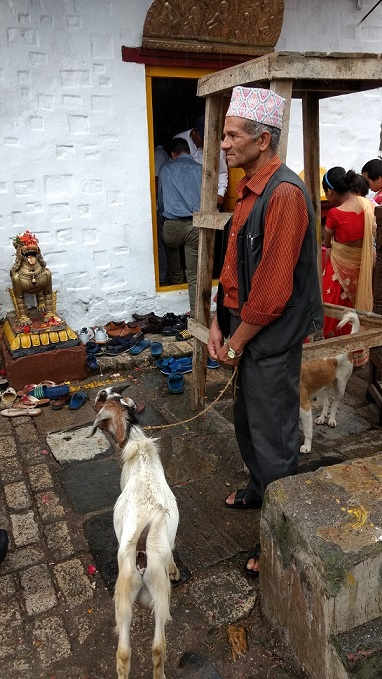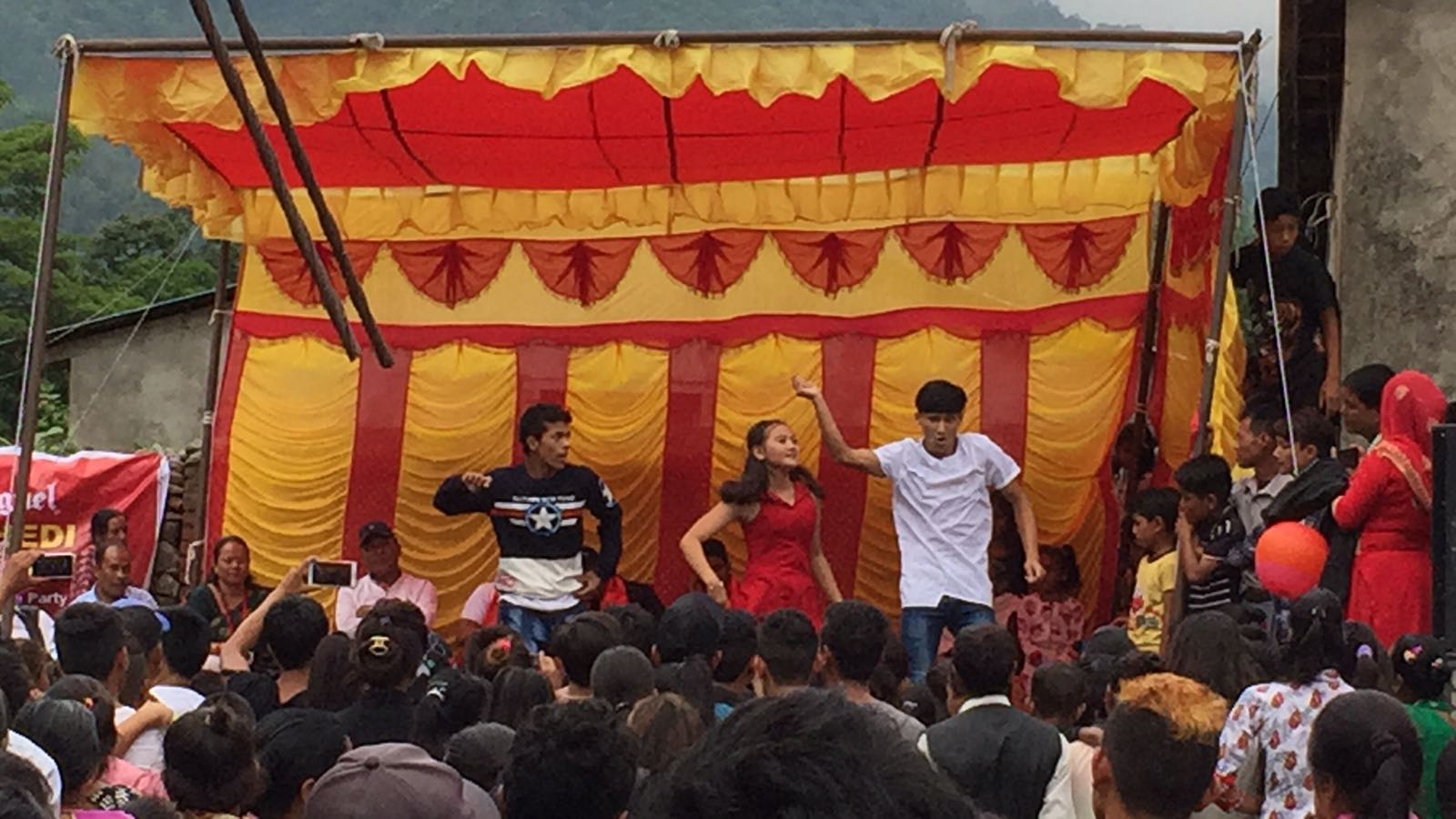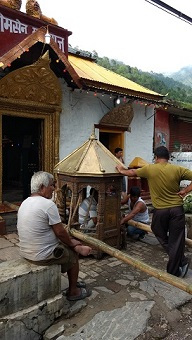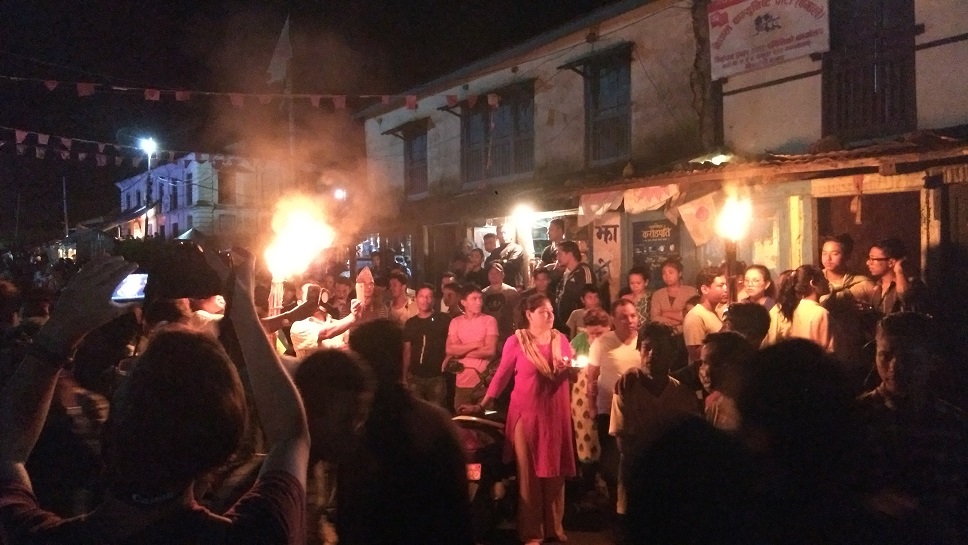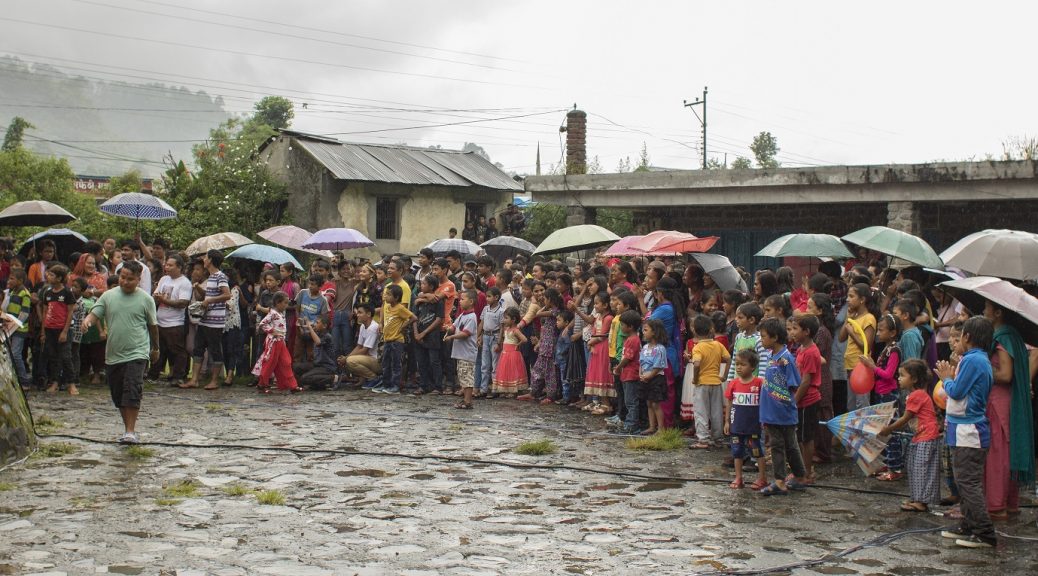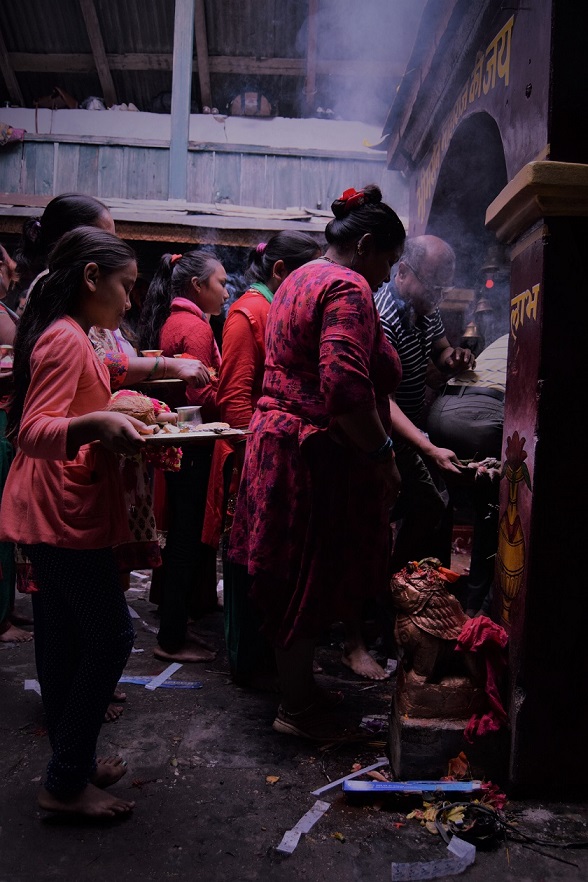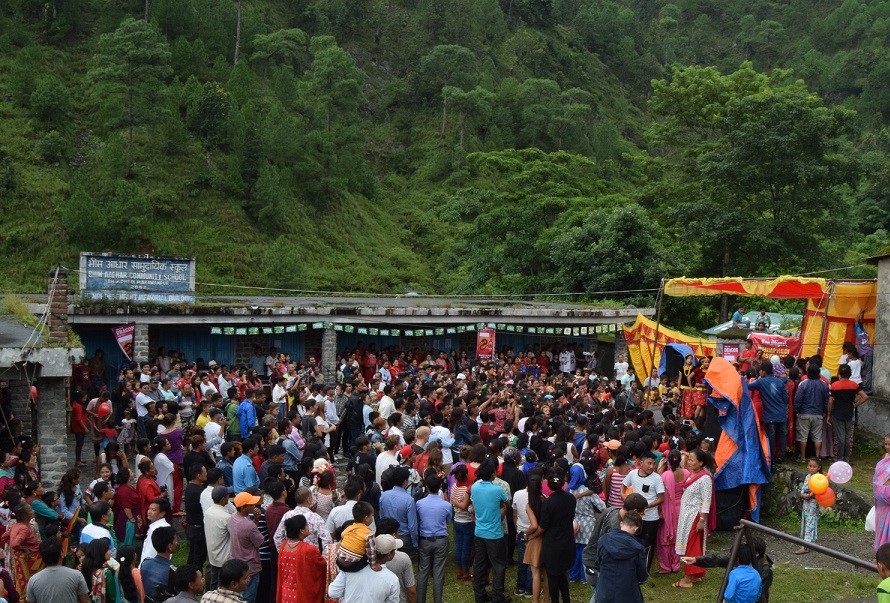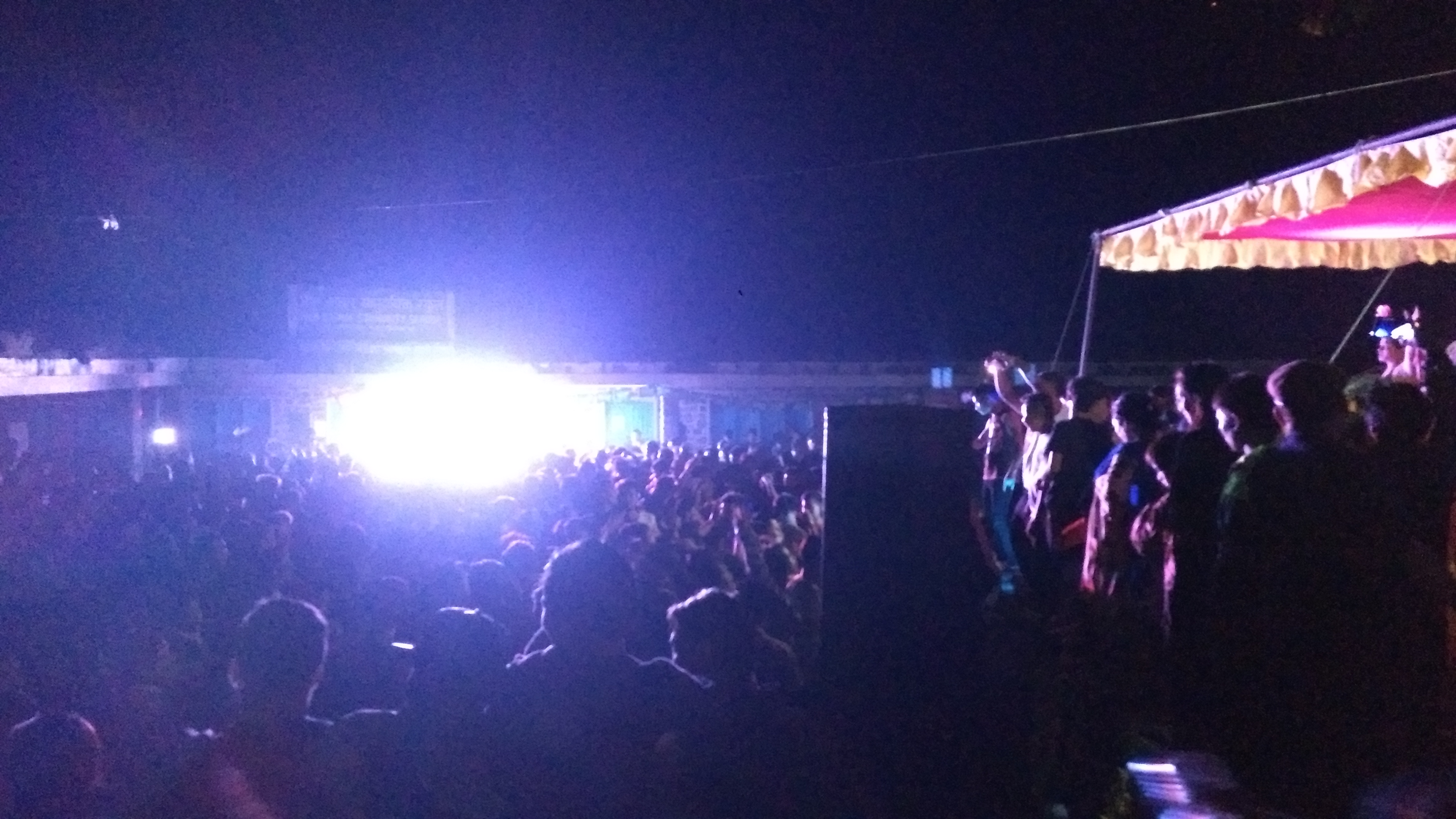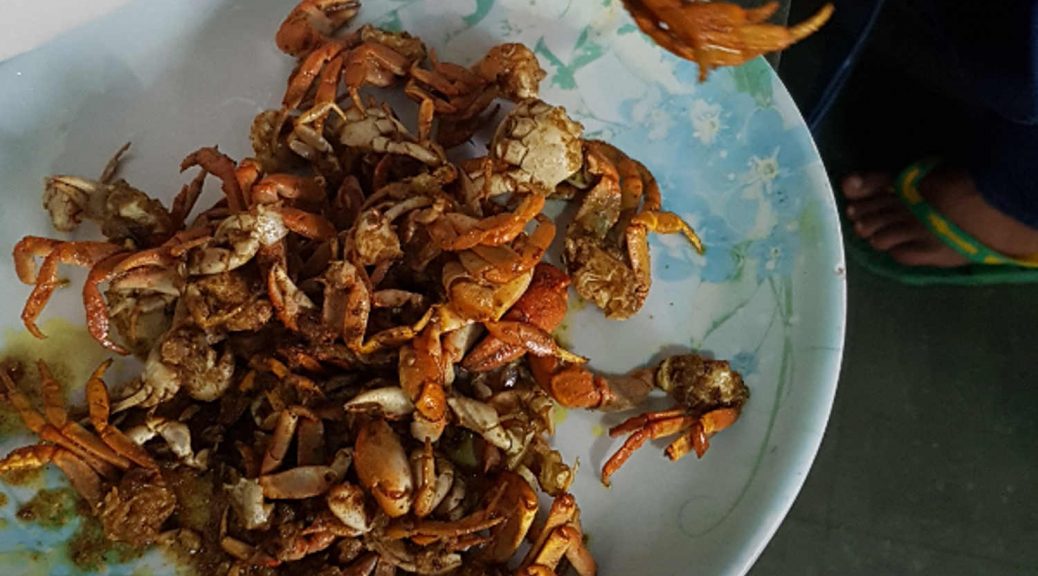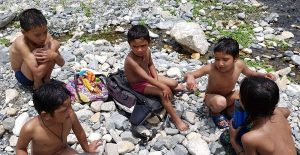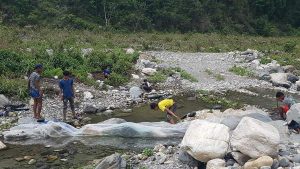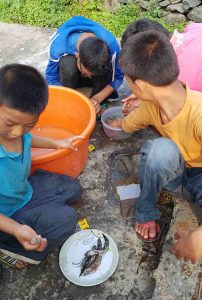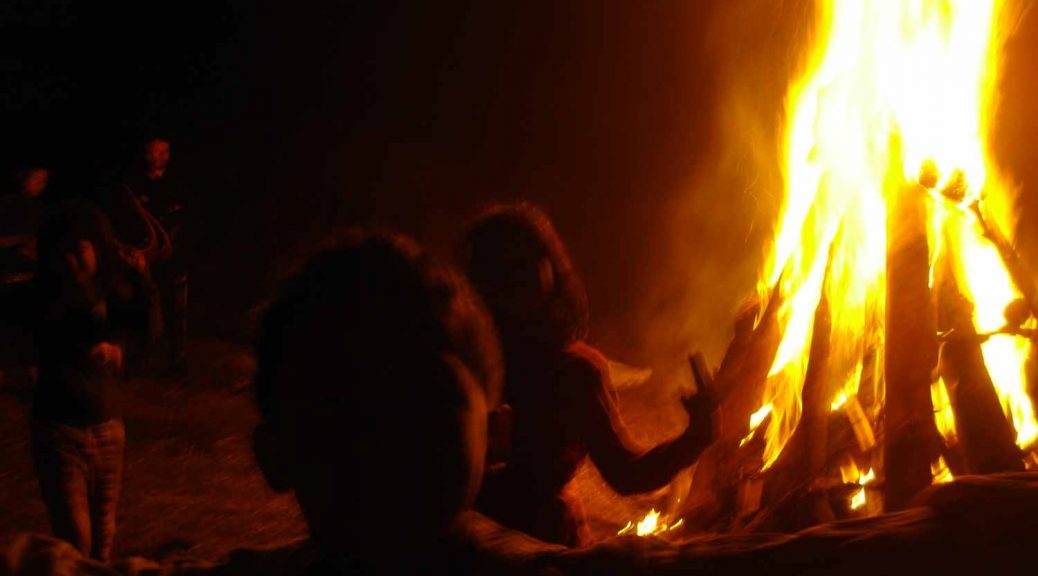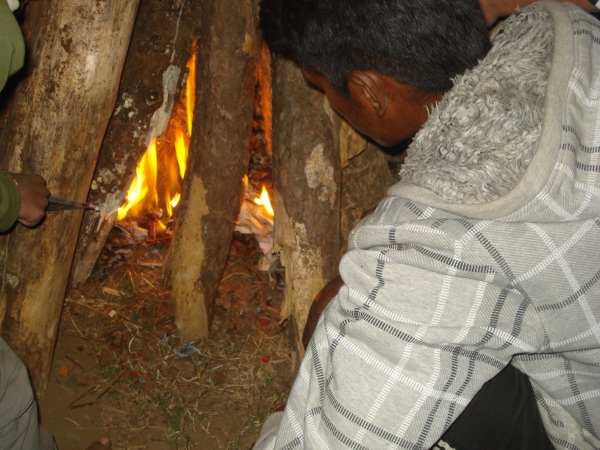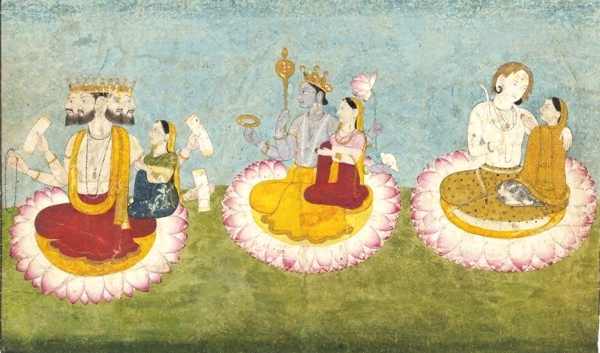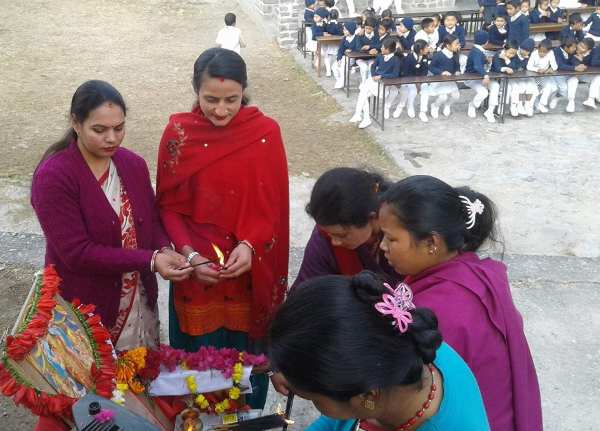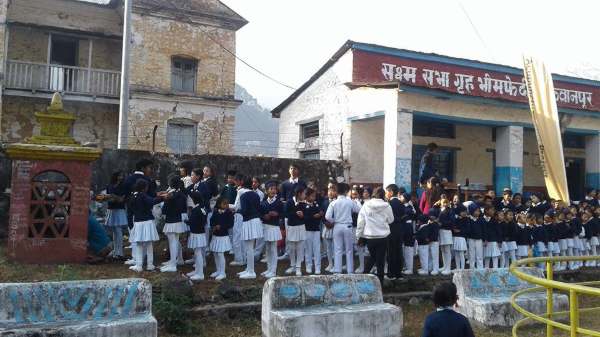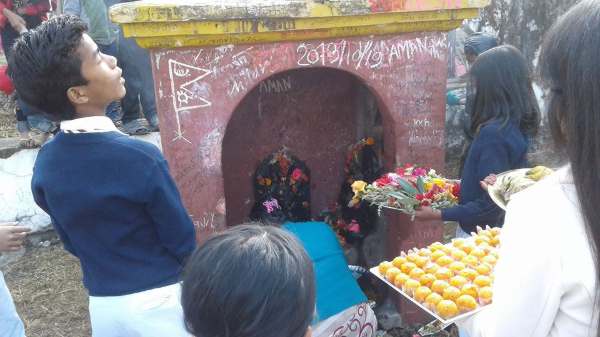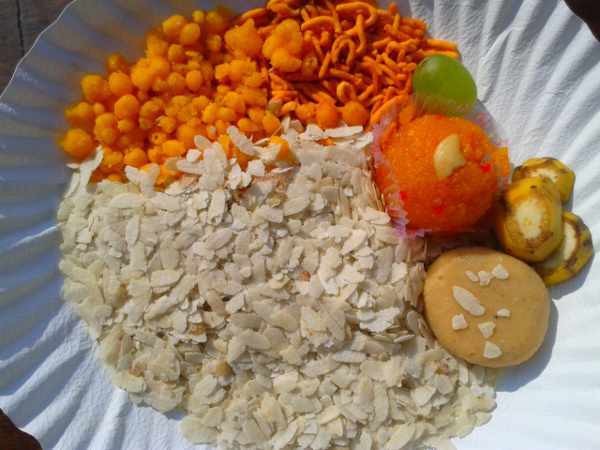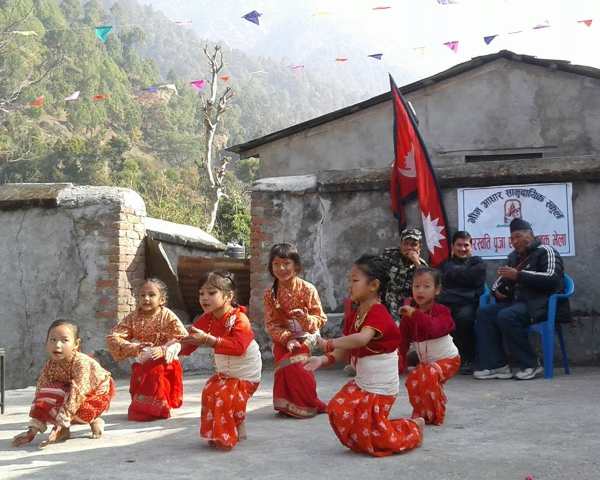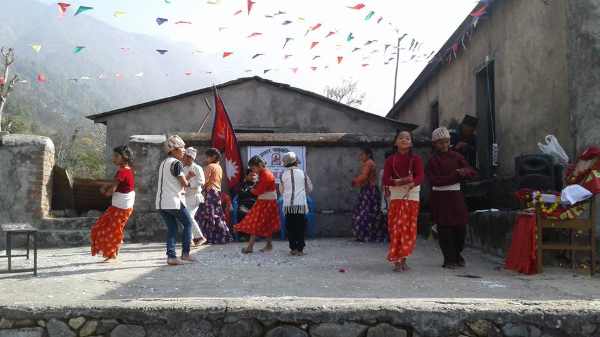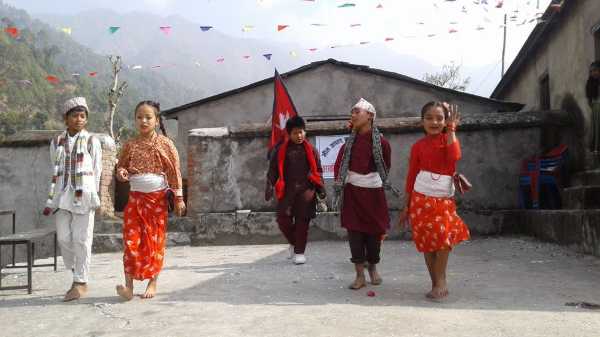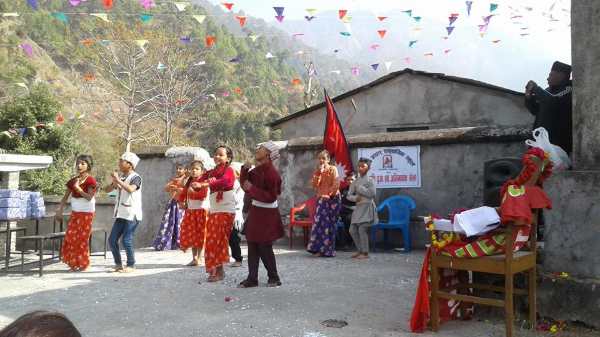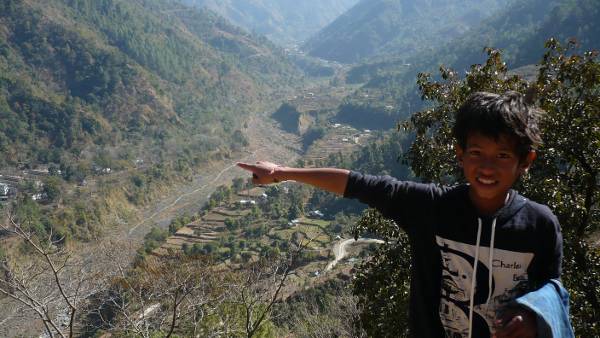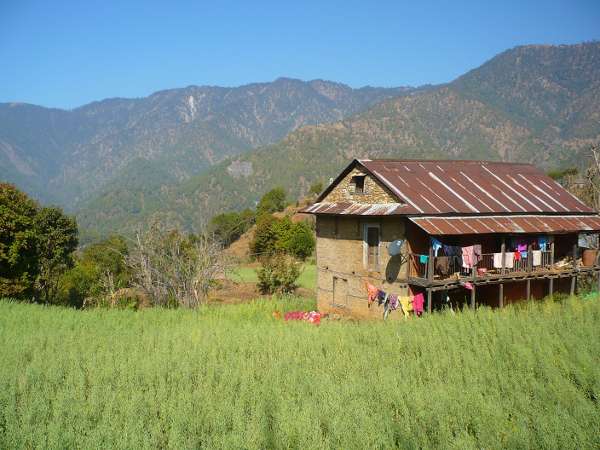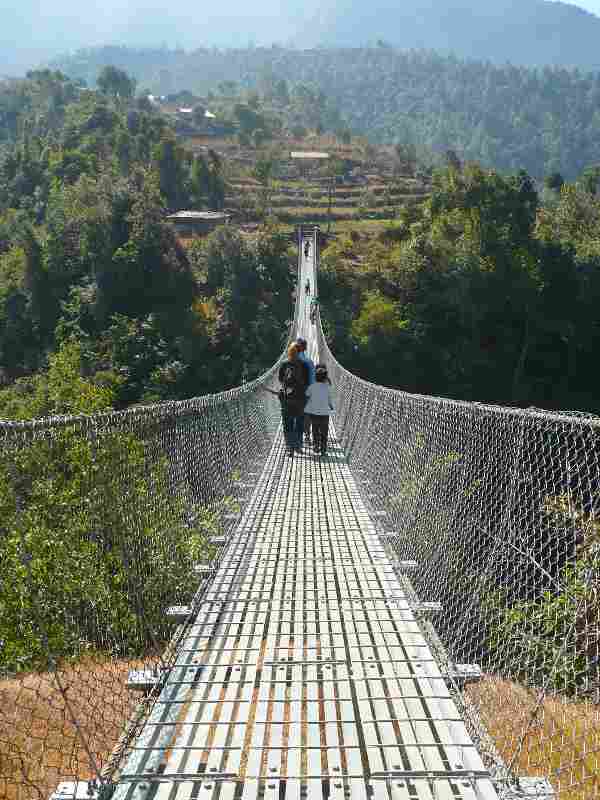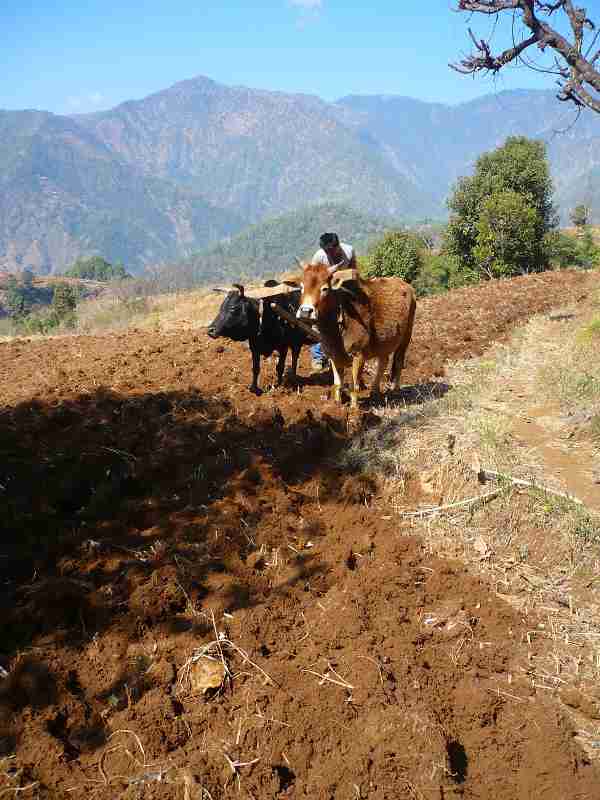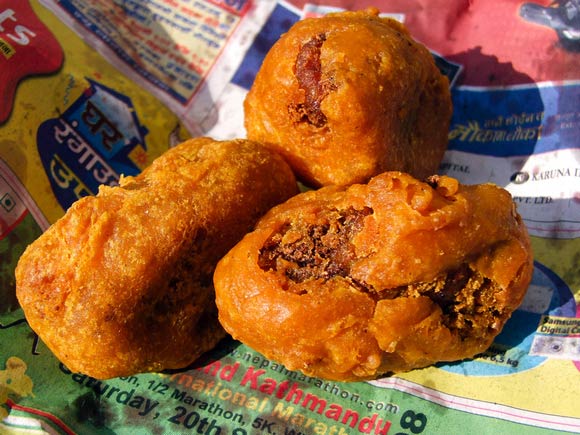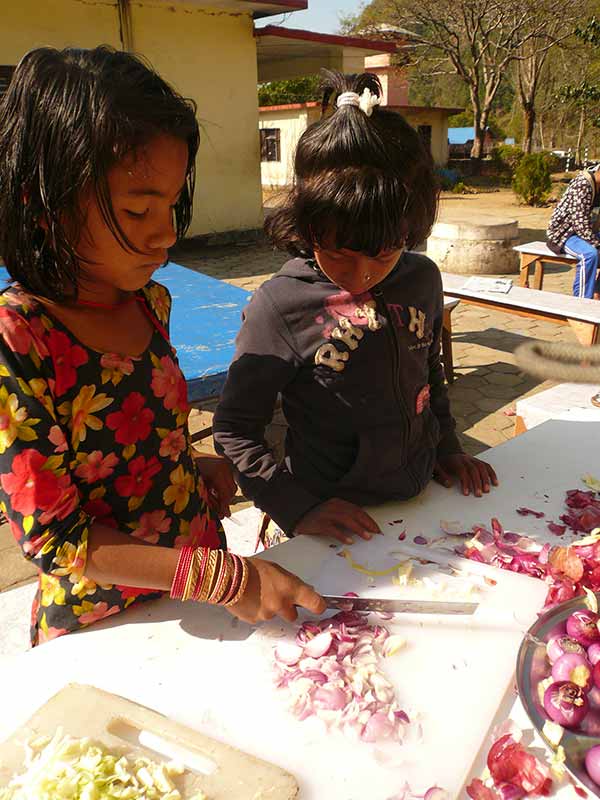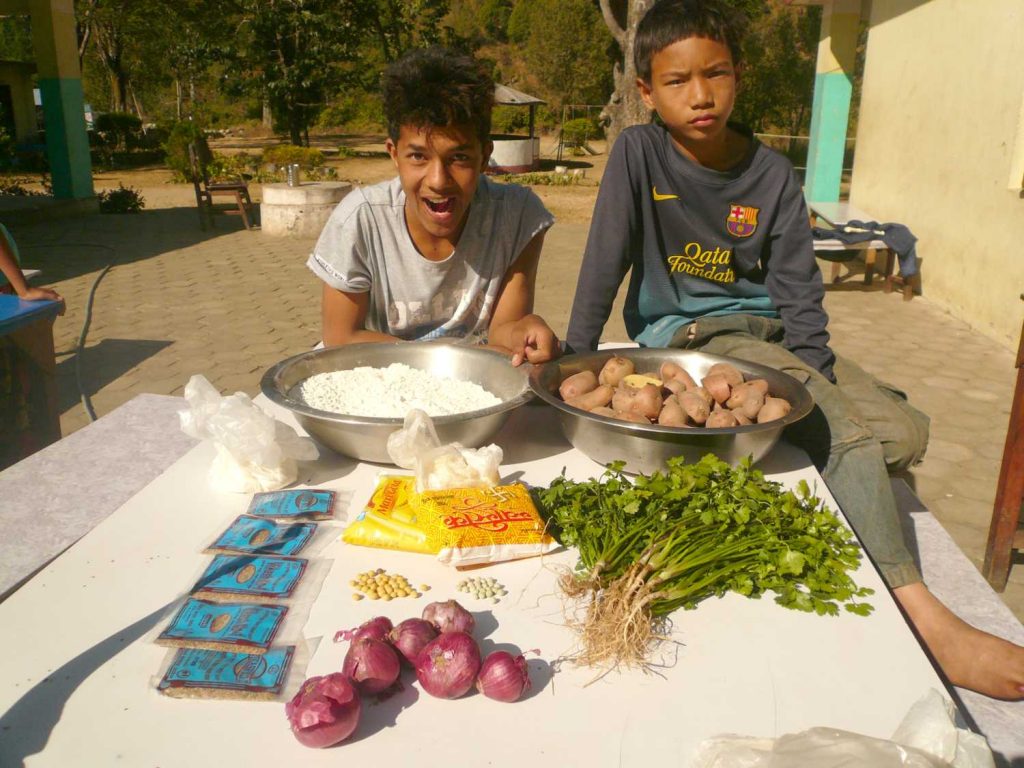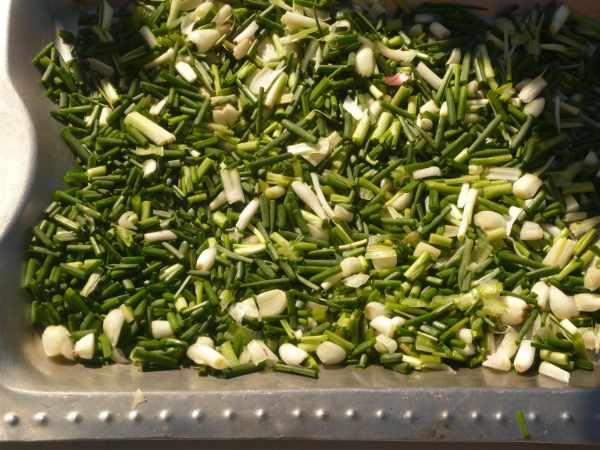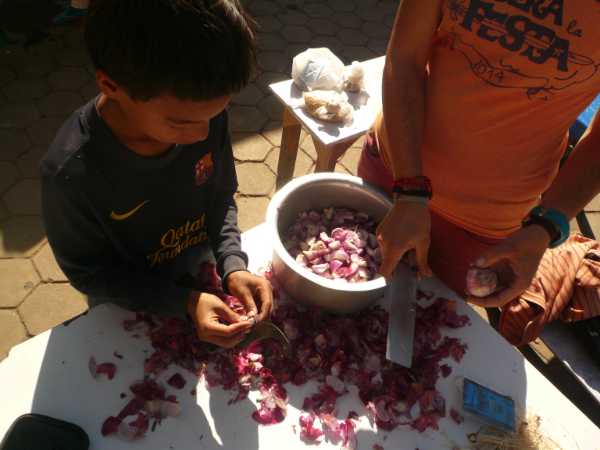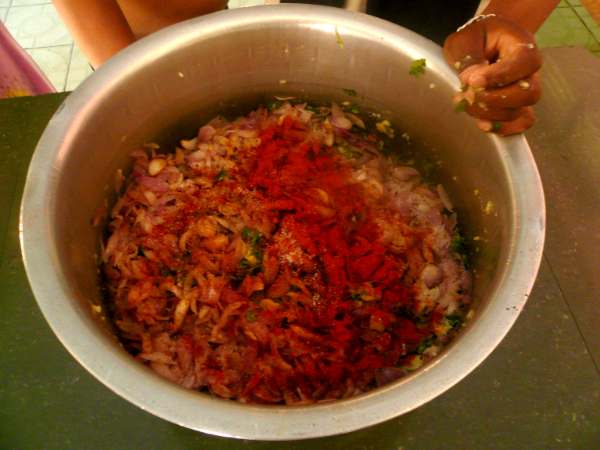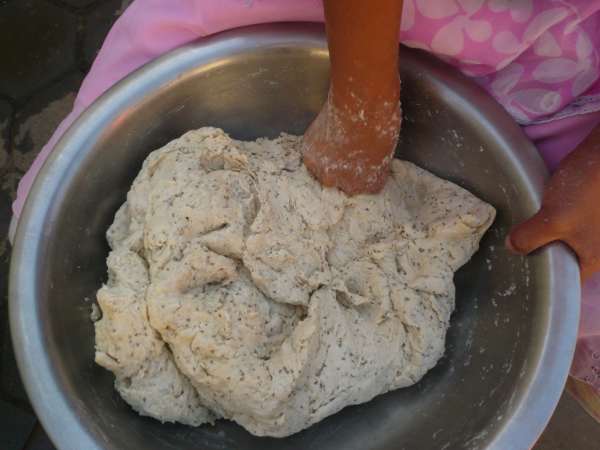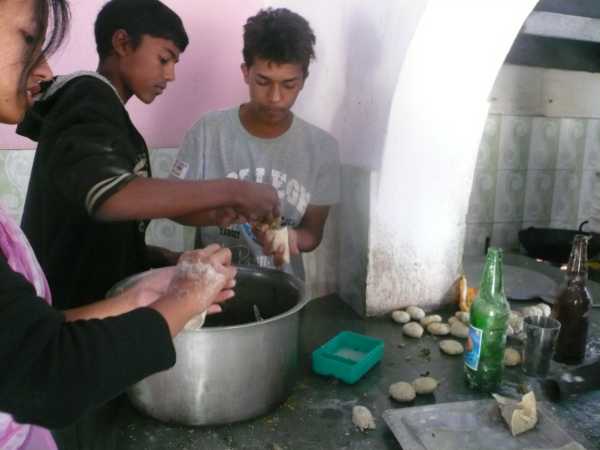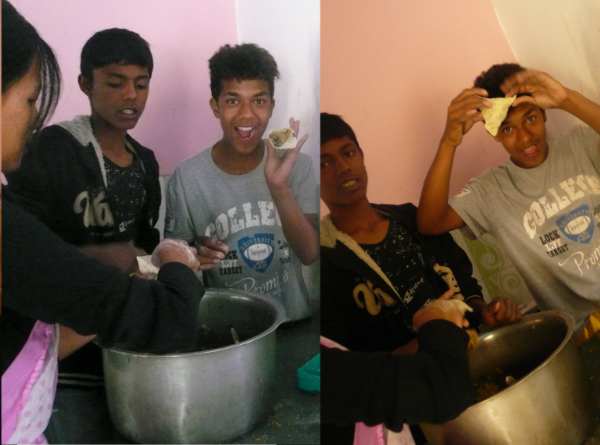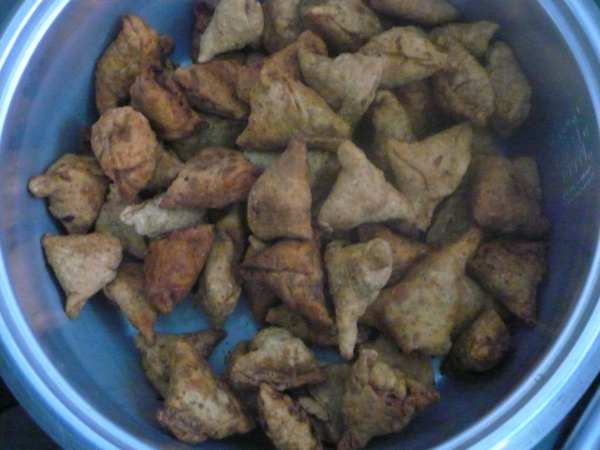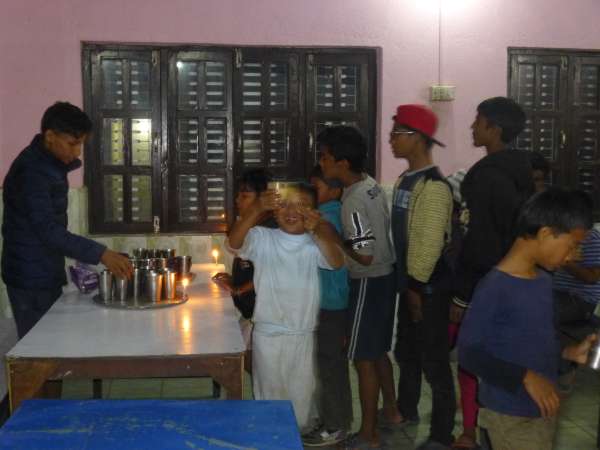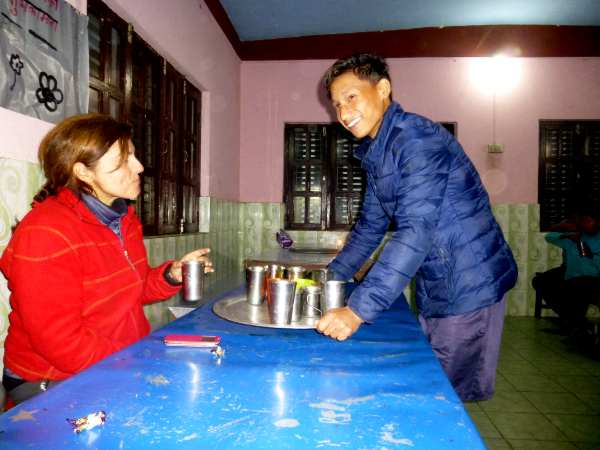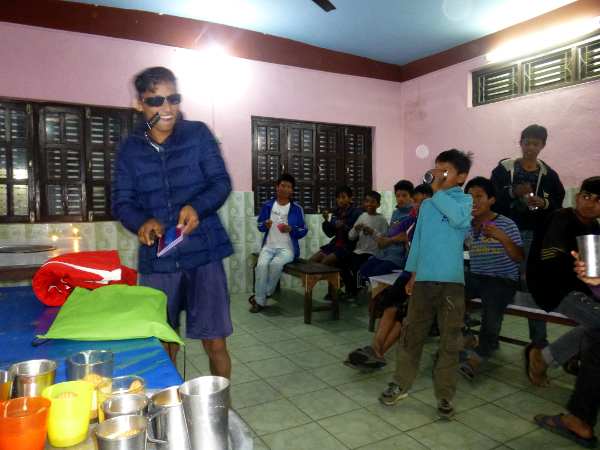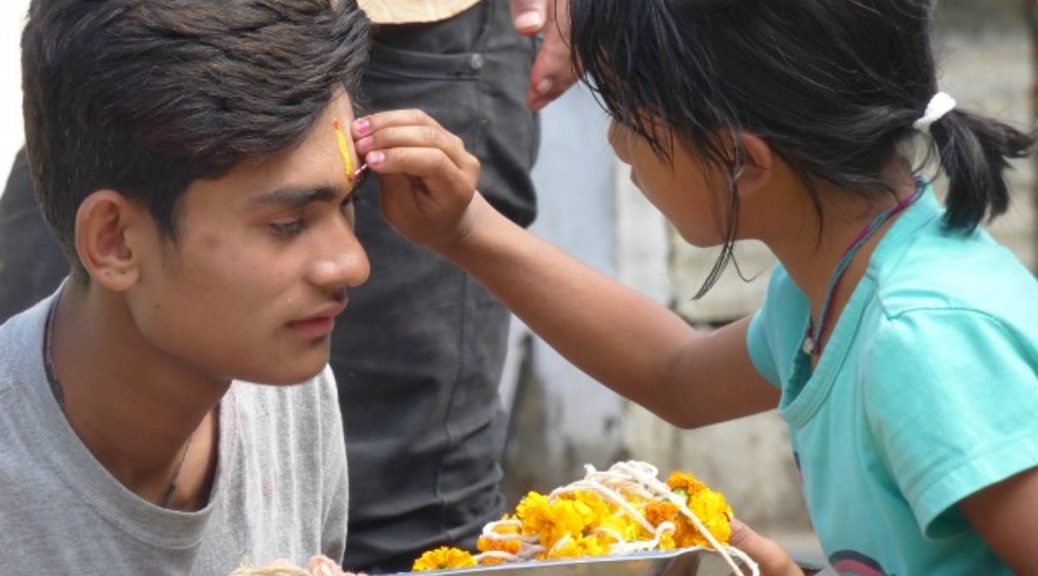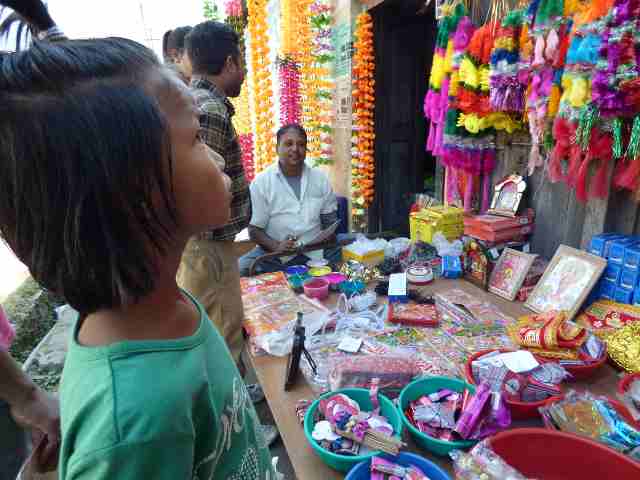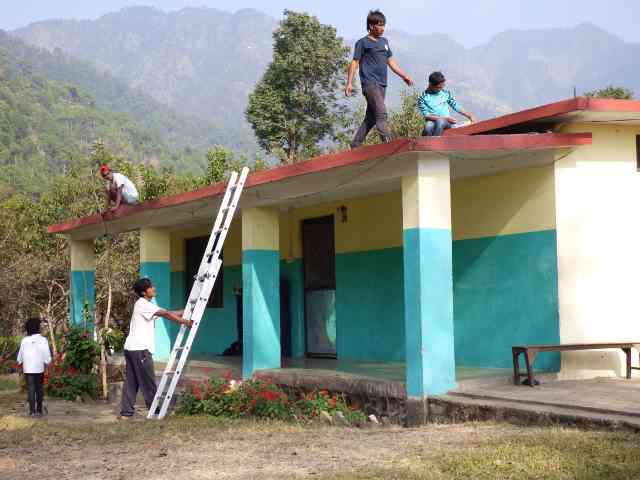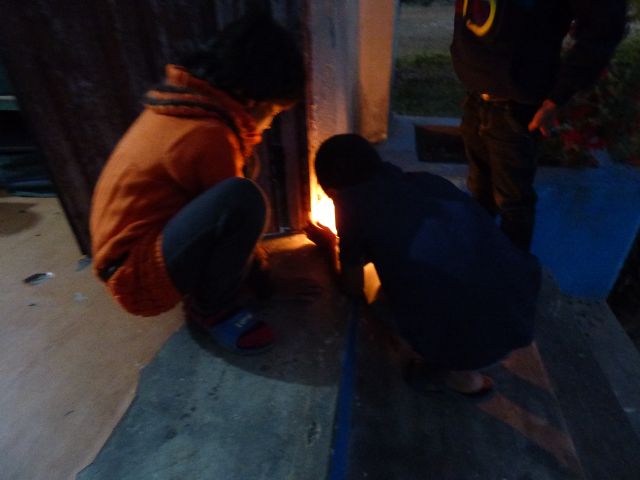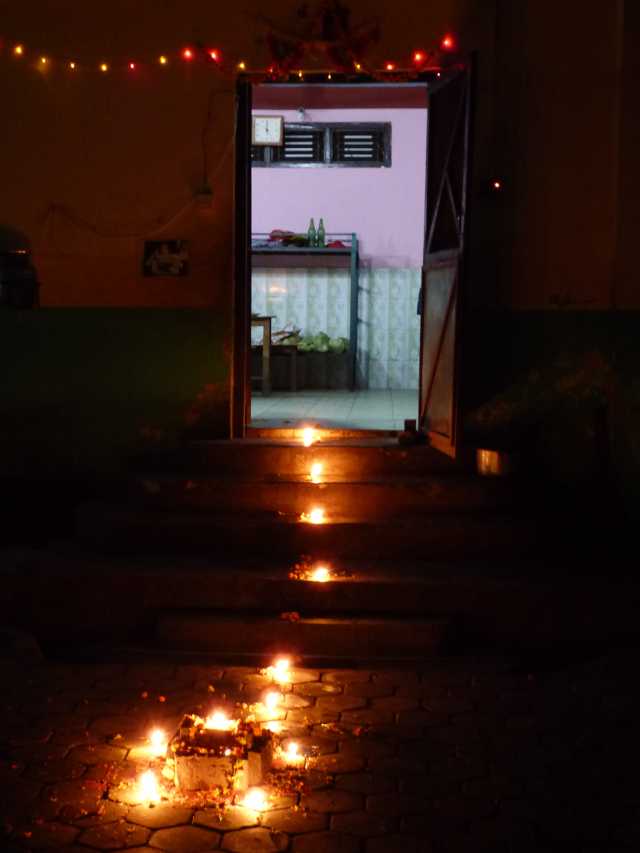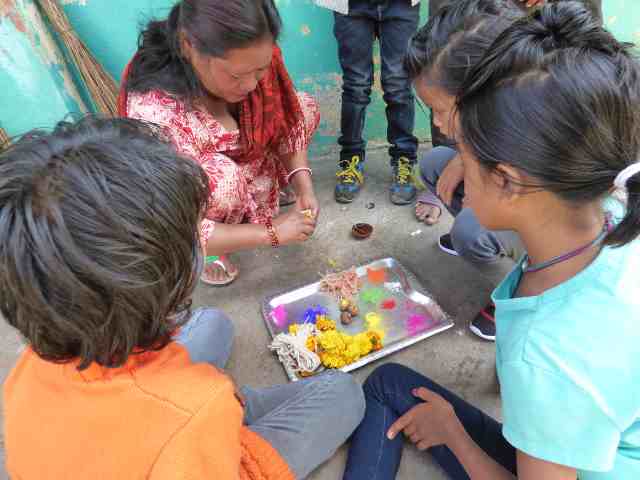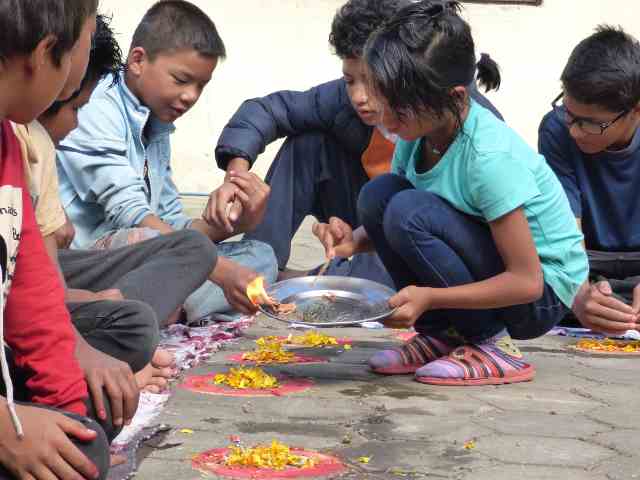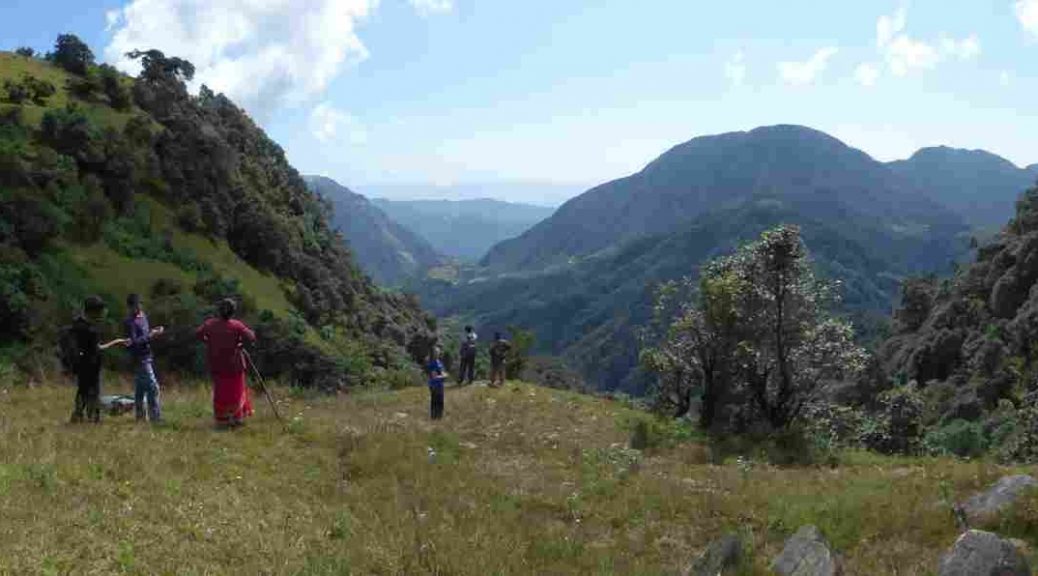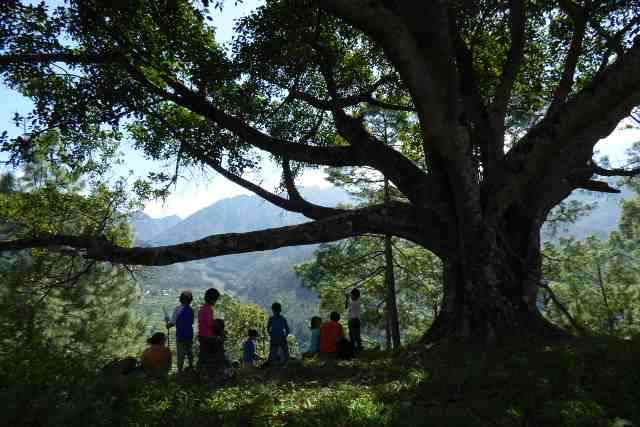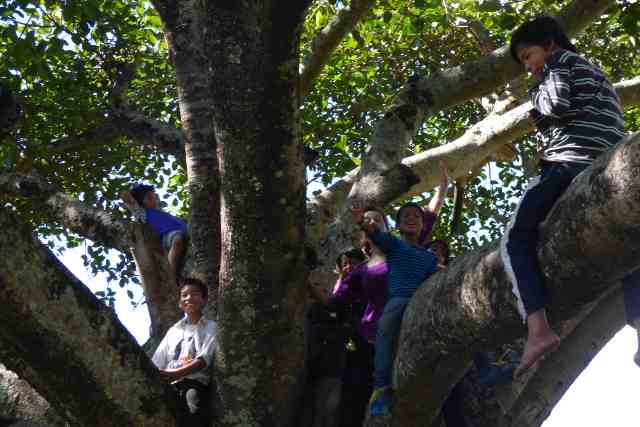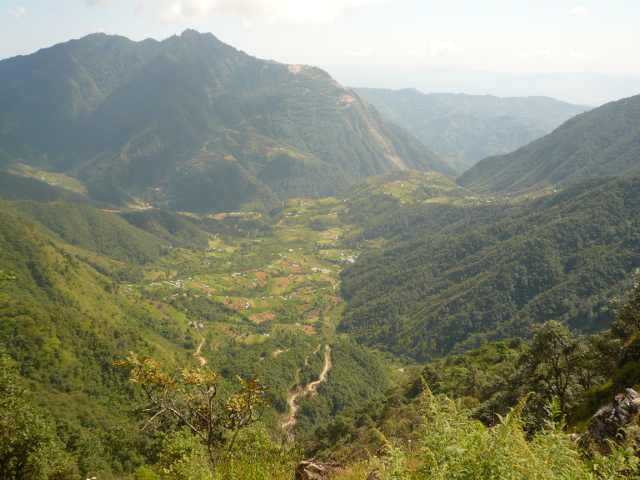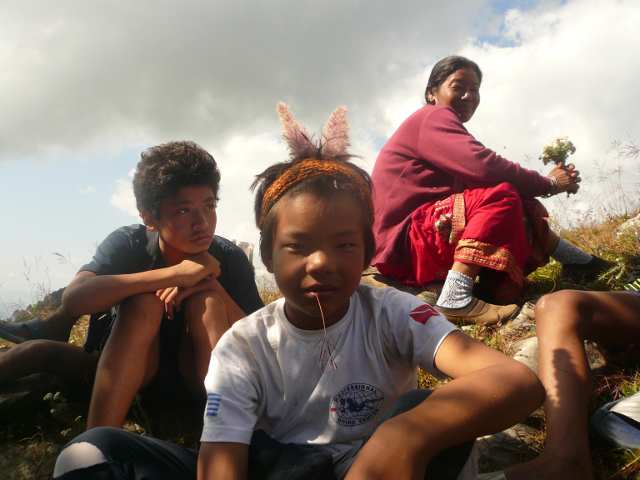Escrito por Joana Alsina, voluntaria de la casa de acogida de Bhimphedi.
En Nepal las calles no están engalanadas, los árboles no están decorados, las luces no parpadean noche y día pero, aún así, el día 25 es fiesta nacional también en Nepal. Así pues, nos decidimos en convertirlo en un día especial para todos nosotros como ya habíamos hecho los dos años anteriores (2014 y 2015).
Este año organizamos una carrera de orientación por todo el pueblo para los 8 grupos de 3 niños y niñas de la casa de acogida. Los preparativos nos entretuvieron durante varios días. Pero fue muy divertido e interesante. Aprendimos mucho, tanto los voluntarios preparando, como los niños jugando.
Este juego de Navidad en grupos consistía en:
1. A cada grupo le dábamos un mapa con una cruz que debían localizar a localización e ir allí. (El mapa original lo cedió Mònica Sans. Las impresiones las trajo Raquel en formato A3 desde Katmandú).
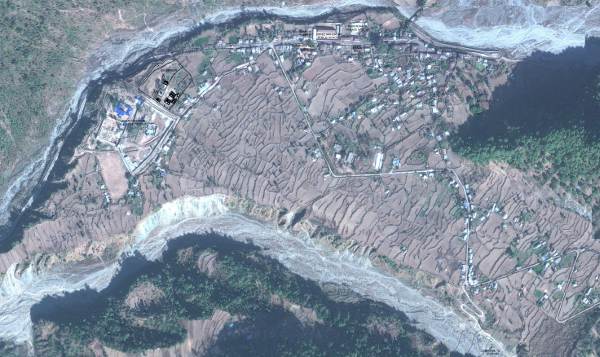


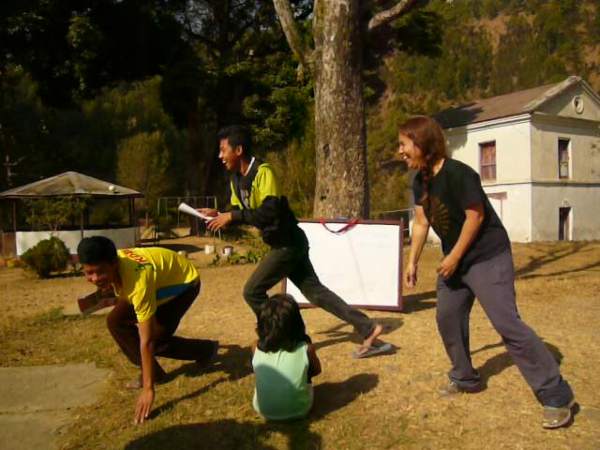
2. Una vez allí, los tres miembros del grupo deseaban «¡Feliz Navidad!» Al comerciante o a la familia y les preguntaban si tenían algo para ellos.
3. El aldeano decía a los niños sólo el principio de una frase hecha nepalí. El trabajo de recopilación, transcripción y traducción de frases hechas la hizo Manisha, con la ayuda de los otros profesores de la escuela comunitaria, de libros y la ayuda técnica de Dani. El trabajo de aliarse con los aldeanos también la hizo el día antes del juego Manisha (nuestra voluntaria nepalí), con la ayuda de Joana y Raquel, paseándose por todo el pueblo, mapa en mano, para marcar los lugares seleccionados para las pruebas.
4. El grupo, tenía que volver a la casa de acogida, y escribir la frase completa en la pizarra para conseguir hasta 5 puntos. Si no la conocían tenían que encontrar a alguien que les ayudara (y el gran comodín fue Maya didi, la cuidadora del centro que conoce todas las frases hechas nepalíes).

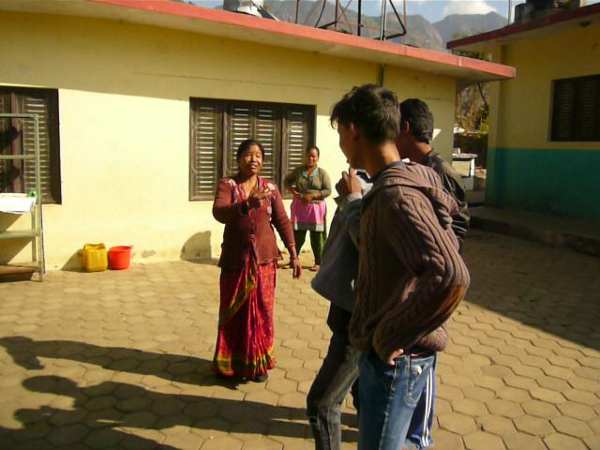
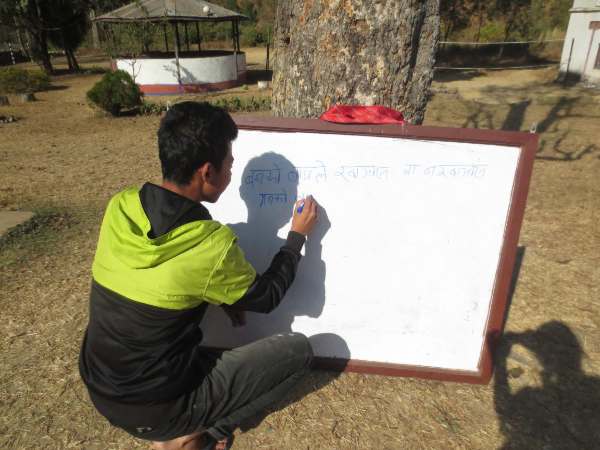

5. Una vez escrita la frase, el grupo tenía que inventarse una pequeña representación de una situación en la que se podría decir esa frase. 5 puntos más en juego.
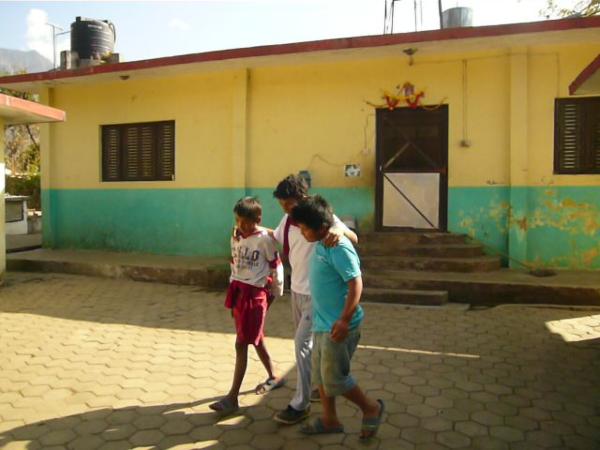
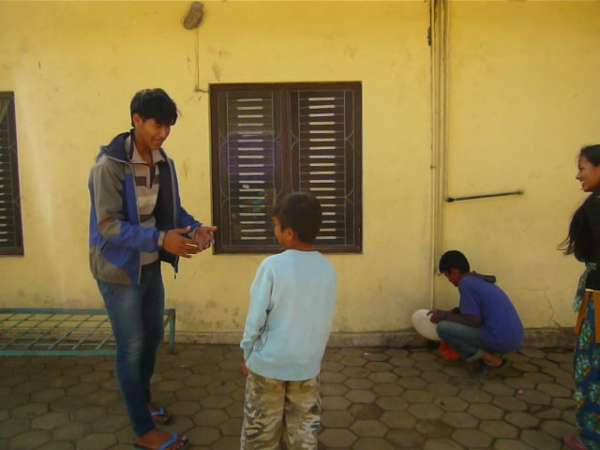
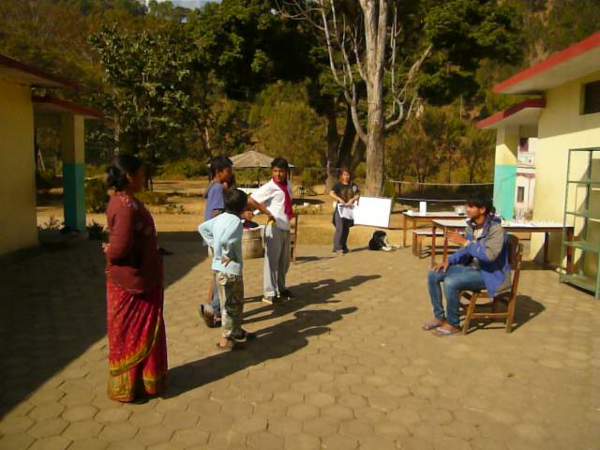
6. Una vez habían hecho estas dos pruebas se les volvía a marcar un punto en el mapa y volvían a marchar hasta conseguir 5 frases hechas en diferentes lugares del pueblo.
Las localizaciones se sorteaban de manera que algunos grupos les tocó ir varias veces a Chabeli (la parte más lejana del pueblo, cuesta arriba). Fueron dos horas muy intensas tanto para ellos, que acabaron rendidos de ir arriba y abajo, y para nosotros que no parábamos de recibir los grupos con las nuevas frases hechas y de valorar sus actuaciones.
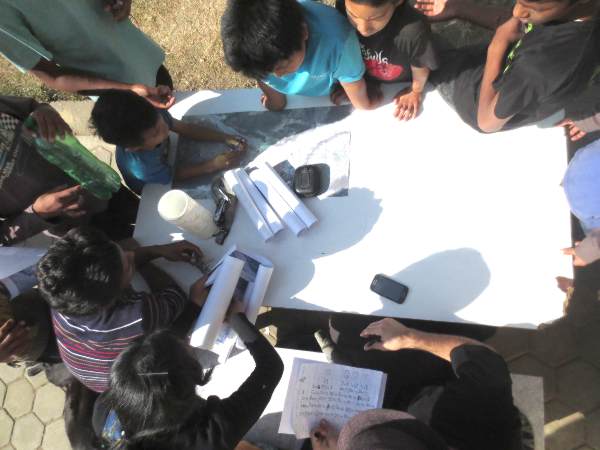
Finalmente, hacia las doce y media del mediodía, terminamos la yincana y los tres primeros grupos pudieron escoger uno de los tres lotes de Navidad que habíamos preparado.





También había un regalo para todos ellos: unos altavoces para poder ver las películas y escuchar música.
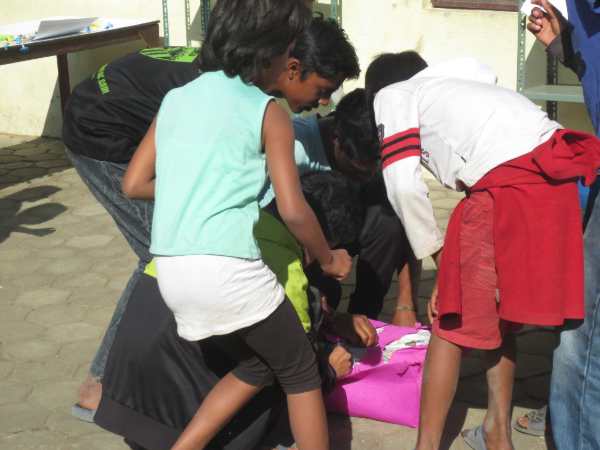
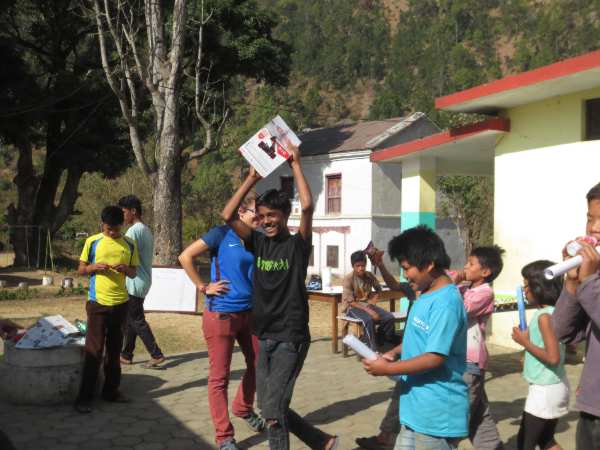
Pero las sorpresas no acabaron aquí. Kush trajo carne para todos para la cena de Navidad. Estaba delicioso! Así pues la Navidad no fue tan diferente para los voluntarios que estamos tan lejos de casa, porque lo pasamos en familia, ilusionados y rodeados de buena comida.
Os dejamos con las 21 frases hechas nepalíes que utilizamos para la yincana y que ahora todos los niños, si no las conocían antes, ya pueden utilizar:
Frase de ejemplo que representamos Dani, Raquel, Manisha y yo.
मुखमा राम् राम् बकलिमा छुरा।
Fonética: Mukhmā rām rām bakalimā chhurā.
Literal: En la boca Ram Ram, en el bolsillo un cuchillo.
Significado: Se utiliza cuando alguien habla bien de ti delante de ti, pero después en tu espalda dice cosas ma-las de ti.



Las 20 frases hechas que se encontraron los niños en las diferentes casas del pueblo:
हाड् नभएको जिब्रो चिप्लिन्छ।
Fonética: Hāḋ nabheko jibro chiplinchha.
Literal: Como que la lengua no tiene hueso, resbala.
Significado: Equivalente a: “Quien tiene boca se equivoca”.
वैगुणिलाई गुणले मार्नु पर्छ।
Fonética: Vaiguṅilāī guṅle mārnu parchha.
Literal: Tenemos que matar el mal con bien.
Significado: Incluso si alguien te hace algo malo, tu debes responderle con buenos actos o palabras.
तै रानी मै रानी कसले भर्छ कुवाको पानी।
Fonética: Tai rānī mai rānī kasle bharchha kuwāko pānī.
Literal: Si tu eres una reina y yo soy una reina, ¿quién cogerá el agua del pozo?
Significado: Si nadie no quiere trabajar, el trabajo no se hará.
अचानाको पिर् खुकुरीलाई के थाहा।
Fonética: Achānāko pir khukurīlāī ke thāhā.
Literal: El cuchillo no sabe nada del dolor de la madera de cortar.
Significado: Solo quien lo sufre puede entender el dolor.
रात् भरी करायो दक्षिणा हरायो।
Fonética: Rāt bharī karāyo dakshiṅā harāyo.
Literal: Se quejó toda la noche y no consiguió nada.
Significado: Cuando alguien trabaja duro para conseguir algo pero no tiene éxito finalmente.
एकले थुकि सुकि सयले थुकि नदि।
Fonética: Ekle thuki suki sayale thuki nadi.
Literal: Un escupitajo se seca, cien escupitajos hacen un rio.
Significado: Solo no podrás lo podrás conseguir, pero todos juntos podemos hacer grandes cosas.
नाच्न नजान्ने आगँन् टेढो।
Fonética: Nāchna najānne āga:n ṫeḋho.
Literal: Quien no sabe bailar, siente el suelo irregular.
Significado: Cuando alguien no sabe hacer alguna cosa y en vez de reconocerlo culpa a otras personas o a las circunstancias.
आफ्नो आङ्गको भैसी देख्दैन अर्काको आङ्गको जुम्रा पनि देख्छ।
Fonética: Ᾱphno āηgko bhaisi dekhdaina arkāko āηgko jumrā pani dekhchha.
Literal: En tu espalda no puedes ver un búfalo, en la espalda de los otros puedes ver un piojo.
Significado: Es fácil ver los errores de los otros, en cambio es muy difícil darse cuenta de los propios.
अल्छि तिघ्रो स्वादे जिब्रो।
Fonética: Alchhi tighro swāde jibro.
Literal: Muslo perezoso, lengua deliciosa.
Significado: Cuando alguien no quiere hacer ningún esfuerzo, pero en cambio quiere tener todas las comodidades y beneficios.
मेरो गोरुको बाह्रै टक्का।
Fonética: Mero goruko bāhrai ṫakkā.
Literal: Mi buey vale doze.
Significado: Cuando alguien es muy tozudo, cree que siempre tiene razón y no escucha los puntos de vista de los demás.
के गर्छस् मङ्गले, आफ्नै ढङ्गले।
Fonética: Ke garchhas Maηgale, āphnai ḋhaηgale.
Literal: Lo que Mangal hace, los errores van a él mismo.
Significado: Cuando haces malas acciones, sufrirás las consecuencias.
वनको बाघले खाओस् नखाओस् मनको बाघले खान्छ।
Fonética: Vanko bāghle khāos nakhāos manko bāghle khānchha.
Literal: El tigre de la selva quizás te comerá, o no; pero el tigre del corazón seguro que te devorará.
Significado: Si tienes miedo que te pueda pasar algo malo, incluso cuando estas cosas malas no te pasen, lo habrás pasado mal sin ninguna razón.
घरको बाघ् वनको स्याल्।
Fonética: Gharko bāgh vanko syāl.
Literal: En casa tigre, en la selva zorro.
Significado: Cuando alguien es muy tozudo y mal educado en casa, pero cuando debería utilizar ese genio fuera de casa, no se atreve.
खुट्टा भए जुत्ता कत्ति कत्ति।
Fonética: Khuṫṫā bhae juttā katti katti.
Literal: Allí donde hay pies, hay muchos zapatos.
Significado: Equivalente a “Hay muchos peces en el mar”.
हुने हार् दैव नटार्।
Fonética: Hune hār daiva naṫār.
Literal: Lo que tiene que pasar, ni Dios lo puede parar.
Significado: Nadie puede hacer nada para evitar las cosas inevitables.
बुढा बुढिको झगडा परालको आगो।
Fonética: Buḋhā buḋhiko jhagaḋā parālko āgo.
Literal: La lucha entre marido y mujer es como el fuego de la paja.
Significado: Cuando el marido y la mujer se pelean, aunque parezca algo grave, no puede durar mucho.
जसले मह काट्छ, उसले हात् चाट्छ।
Fonética: Jasle maha kāṫchha, usle hāt chāṫchha.
Literal: Quien corta la miel, se lame la mano.
Significado: Quien haga labor, recogerá los frutos.
बादरको हातमा नरिवल्।
Fonética: Bādarko hātmā nariwal.
Literal: El coco está en las manos del mono.
Significado: Cuando alguien no tiene cuidado de las cosas, y cuando coge algo ya sabes que no durará mucho antes de romperse.
१२ छोरा १३ नाति बुढाको धोक्रो काधँ माथी।
Fonética: Barhā chhorā terha nāti buḋhāko dhokro kādh: māthī.
Literal: Doce hijos y trece nietos, pero el paquete pesado lo lleva a hombros el señor mayor.
Significado: Cuando alguien, estando rodeado de gente cercana, no recibe la ayuda de nadie cuando los necesita.
एक हातले ताली बज्दैन।
Fonética: Ek hātle tālī bajdaina.
Literal: Una mano no puede aplaudir sola.
Significado: Nos tenemos que ayudar unos a los otros.
